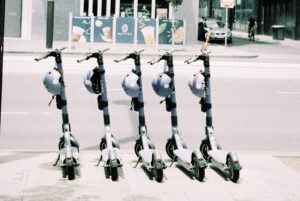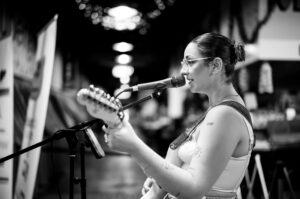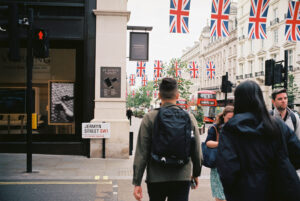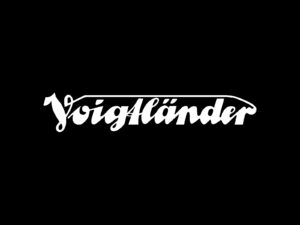We are seeing a lot more medium format cameras out now, so what is the size equivalent of a medium format lens to a full frame. As a general rule of thumb, depending on the actual size of the medium format (there are more multiple medium format sizes out there) a 50mm medium formal lens will give you the same field of view as a 28 up to 35mm lens on a full frame. It hinges on the concept of crop factors, particularly when comparing lenses across different sensor or film sizes. While full-frame sensors have simplified some aspects of this comparison, understanding the relationship between medium format lenses is something I got curious about. This detailed guide will help you grasp the intricacies of medium format lens crop factors and their 35mm equivalents, providing a clear understanding of how these factors influence your photography.
Medium Format to Equivalant 35mm Lens Comparison

The Concept of Crop Factors
A crop factor is a numerical value used to translate the focal length of a medium format lens to its 35mm camera equivalent. This is essential for photographers transitioning between formats, allowing them to maintain a consistent field of view. Crop factors are calculated based on the diagonal measurement of the image sensor or film negative. For example, a 6×6 medium format camera has a crop factor of approximately 0.55. This means an 80mm lens on a 6×6 medium format camera would provide a field of view similar to a 44mm lens on a 35mm camera.

Medium Format Lens Equivalents
When dealing with medium format cameras, such as those from Hasselblad or Rollei, it’s important to understand how to convert focal lengths to their 35mm equivalents. Here’s a basic example: an 80mm lens on a 6×6 medium format camera is roughly equivalent to a 50mm lens on a 35mm camera. This conversion helps photographers maintain a familiar perspective when switching between formats.

Practical Implications of Crop Factors
While exact matches between medium format and 35mm lenses are not always necessary, understanding these conversions becomes critical, especially when dealing with wide-angle lenses where even a few millimeters can significantly impact the image. For longer focal lengths, the difference is less noticeable. For instance, a medium format 150mm lens might translate to around an 85mm lens in 35mm terms, but the precise calculation is less crucial for telephoto lenses compared to wide-angle lenses.
Understanding Aspect Ratios and Diagonal Measurements
The diagonal measurement of the negative or sensor plays a key role in determining crop factors. However, not all aspect ratios are consistent, which can complicate these calculations. For instance, a 35mm camera lens labeled as 50mm could actually measure anywhere between 48mm to 52.5mm. This variability is why exact precision in equivalent focal lengths is less important in practical terms. Instead, these conversions provide a close approximation to help photographers make informed choices about their lenses.
Cheat Sheet for Medium Format to 35mm Equivalents
To assist photographers in quickly identifying equivalent focal lengths, here is a simplified conversion guide:
6×6 Medium Format Crop Factor: 0.55
- 80mm (Medium Format) ≈ 44mm (35mm Format)
- 150mm (Medium Format) ≈ 82.5mm (35mm Format)
6×7 Medium Format Crop Factor: 0.48
- 90mm (Medium Format) ≈ 43.2mm (35mm Format)
- 180mm (Medium Format) ≈ 86.4mm (35mm Format)
Medium format to 35mm Full Frame Detailed Comparisons
645 Crop Factor = 0.62
| 645 Lens | 35mm Equivalent |
| 45mm | 28mm |
| 55mm | 34mm |
| 60mm | 37mm |
| 55-110mm zoom | 34-68mm |
| 80mm | 50mm |
| 80-160mm | 50-100mm |
| 100mm | 62mm |
| 120mm | 75mm |
| 150mm | 93mm |
| 200mm | 124mm |
6 x 6 Crop Factor = 0.55
| 6 x 6 Lens | 35mm Equivalent |
| 30mm | 17mm |
| 40mm | 22mm |
| 50mm | 28mm |
| 60mm | 33mm |
| 65mm | 36mm |
| 75mm | 41mm |
| 80mm | 44mm |
| 120mm | 66mm |
| 150mm | 83mm |
| 180mm | 99mm |
| 200mm | 110mm |
6 x 7 Crop Factor = 0.5
| 6 x 7 Lens | 35mm Equivalent |
| 45mm | 23mm |
| 50mm | 25mm |
| 65mm | 33mm |
| 90mm | 45mm |
| 105mm | 53mm |
| 127mm | 64mm |
| 165mm | 83mm |
| 180mm | 90mm |
| 200mm | 100mm |
| 250mm | 125mm |
| 360mm | 180mm |
6 x 8 Crop Factor = 0.45
| 6 x 8 Lens | 35mm Equivalent |
| 65mm | 30mm |
| 90mm | 40mm |
| 100mm | 45mm |
| 125mm | 56mm |
| 135mm | 60mm |
| 150mm | 68mm |
| 180mm | 81mm |
| 190mm | 85mm |
| 210mm | 95mm |
6 x 9 Crop Factor = 0.43
| 6 x 9 Lens | 35mm Equivalent |
| 65mm | 28mm |
| 90mm | 39mm |
| 100mm | 43mm |
| 105mm | 45mm |
| 150mm | 65mm |
The Equivalent of Medium Format to 35mm does Vary
Understanding the relationship between medium format lenses and their 35mm equivalents through crop factors is essential for any photographer transitioning between these formats. While precise measurements can vary, having a general understanding of these conversions allows photographers to make informed decisions and maintain consistent perspectives in their work.

Whether you are using a Hasselblad, Rollei, or any other medium format camera, this guide will help you navigate the complexities of lens equivalency and enhance your photographic experience.








































































2 Responses
Hi
Thanks for the article and charts.
Being an aging man with diminishing cognitive faculties I need a little more clarity please.
I’m wanting to simulate the field of view and DOF of a fixed lens Rollei with 75/80mm. According to your charts this is a 50mm on 35. And I’m guessing around 35mm lens on APS.
However, I read elsewhere that a focal length remains the same regardless of format only how much of the scene it includes will change. A given analogy was a big window frame with smaller panes within it.
So yes you are probably right to equate the field of view between the formats/aspect ratios. The ‘lost’ areas between 1:1 & 3:2 can possibly be made up with photo stitching several frames.
But what about the DOF look. Apart from the bokeh effect from different aperture blade designs (which cannot be controlled), is there a way to simulate DOF look of a Rollei 80mm at different apertures 2.8 or 3.5 or 5.6 etc on a 35 or APS? Do they remain equivalent?
Thanks for any insights
Frank
The very short answer is that the larger sensor/film of medium format means that the effect of shallower depth from a more open aperture or higher magnification lens, the more dramatic the depth of field will be. Larger film=shallower depth. The field of view of a 50mm lens on a medium format will be wider than a 50mm on a full frame of APS-C sensor camera.
The long answer
When comparing depth of field (DOF) between different formats, such as medium format and 35mm or APS-C, there are a few key considerations:
Depth of Field Comparison: The depth of field for a given focal length and aperture will indeed be different between formats. Medium format cameras, due to their larger sensor size, will generally produce a shallower depth of field compared to 35mm or APS-C cameras at the same aperture and equivalent focal length. This is because, for a similar field of view, you would need to use a shorter focal length on a smaller sensor to achieve the same composition, and shorter focal lengths at the same aperture will naturally result in deeper depth of field.
Simulating DOF Across Formats:
For Equivalent Focal Lengths: If you want to simulate the depth of field of a Rollei 80mm lens (which is equivalent to about a 50mm lens on a 35mm format) using a 35mm or APS-C camera, you will need to account for the crop factor. For a 35mm camera, you could use a 50mm lens, and for APS-C, a 35mm lens would be closer to the field of view of the Rollei 80mm. However, you will need to use a wider aperture on these smaller formats to achieve a similar DOF to that of the medium format lens.
For example, if you are using an 80mm lens on medium format at f/4, you might need to use a lens with a wider aperture (like f/2.8) on a 35mm camera to achieve a similar DOF effect. On an APS-C sensor, this effect would be even more pronounced, and you might need an even wider aperture.
Using DOF Calculators: There are online depth of field calculators that can help you simulate the DOF effects for different formats. You can input the focal length, aperture, and sensor size to get a visual approximation of how the depth of field will appear.
Aspect Ratio and Composition: The aspect ratio of the sensors also plays a role in how much of the scene you capture and how the background blur might appear. While stitching photos can help with capturing more of the scene, it won’t fully replicate the depth of field characteristics of a larger sensor.
Practical Tips:
Aperture Adjustment: When using a 35mm or APS-C camera, compensate for the depth of field difference by adjusting your aperture. For instance, if you’re using a 50mm lens on a 35mm camera, you might need to use an aperture of f/2.8 to get a similar DOF to what you would get with an 80mm lens on a medium format camera at f/4.
Close Focus and Subject Distance: Depth of field is also influenced by the distance between the camera and the subject. By changing your shooting distance or adjusting the focus, you can have some control over the depth of field effect.
In summary, to simulate the depth of field of a Rollei 80mm lens on a different format, you need to account for the crop factor and aperture equivalency. Depth of field will not remain exactly equivalent across formats due to the differences in sensor size, but careful adjustment of focal length and aperture can help you achieve a similar visual effect.
Hope this helps.
Adam